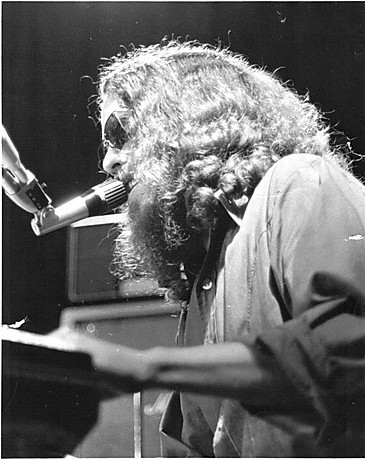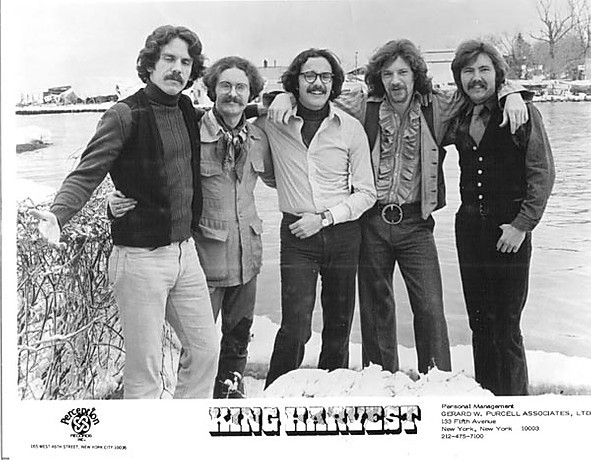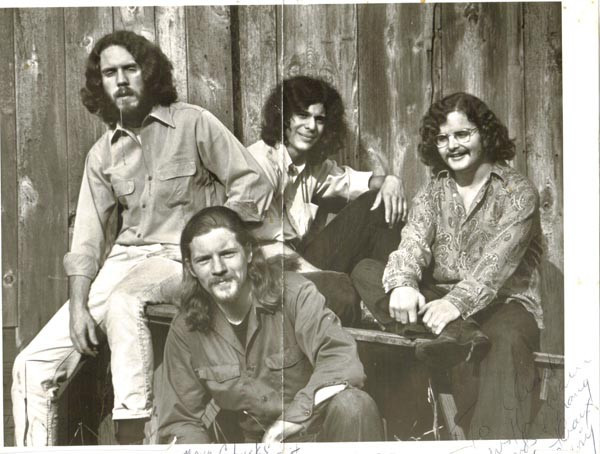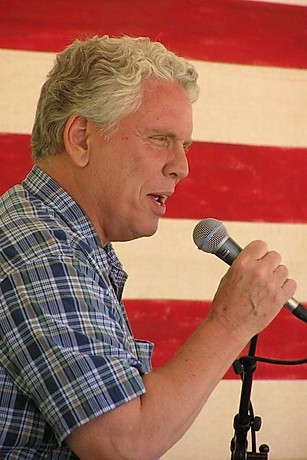Few songs capture a sense of carefree joy quite like “Dancing in the Moonlight.” The breezy melody and uplifting lyrics have made it a beloved classic, covered by numerous artists and featured in countless films and shows. Originally a hit for King Harvest in 1972, and later popularized again by Toploader in 2000, the song’s infectious rhythm seems tailor-made for summer nights and good times. But the feel-good vibes belie a surprisingly somber and violent origin story, rooted in a terrifying real-life experience of its songwriter, Sherman Kelly.
 Sherman Kelly onstage in the 1970s.(Photo courtesy of Sherman Kelly)
Sherman Kelly onstage in the 1970s.(Photo courtesy of Sherman Kelly)
The story begins not under the romantic glow of the moon, but under the harsh glare of a personal trauma in the Virgin Islands. In 1969, Kelly, then running a nightclub in St. Thomas, embarked on a day trip to St. Croix with friends. Seasickness struck Kelly and his girlfriend hard during the yacht journey. Arriving in St. Croix and disembarking for dinner, their nausea persisted, diminishing their appetites. Choosing to avoid another bout of seasickness, the pair decided to stay overnight in town while their friends returned to the yacht anchored in the harbor.
However, disaster struck when Kelly realized he’d left his wallet on the boat, leaving him without funds for accommodation. Turning to local inns, they faced a shocking proposition at the first, and rejection at the second. With limited options and a beautiful night unfolding, Kelly’s girlfriend suggested an unconventional solution: sleeping on the beach.
“So we did,” Kelly recounted. “And that’s all I remember very clearly.”
What followed was a nightmare. While sleeping on the St. Croix beach, Kelly and his girlfriend were brutally attacked by a local gang. Kelly was savagely beaten with baseball bats, while his girlfriend was assaulted. In a moment of desperate resilience, Kelly regained consciousness and fought back, his resistance and outcry startling the attackers enough to make them flee.
 King Harvest in 1972.(Photo courtesy of Sherman Kelly)
King Harvest in 1972.(Photo courtesy of Sherman Kelly)
Bleeding and disoriented, they stumbled along the shoreline, eventually reaching the island’s hospital. They were later believed to be among the early victims of the notorious Fountain Valley Gang, infamous for a later massacre of tourists in 1972 that devastated St. Croix’s tourism industry.
Kelly’s injuries were severe. He recalls overhearing doctors in the hospital discussing his grim prognosis. Despite the initial doubts, he survived, spending days in the St. Croix hospital before returning to St. Thomas and then eventually to New York for further medical treatment to repair the extensive damage to his face and body.
Back home in Ithaca, New York, while recovering from his physical wounds and enduring persistent pain, Kelly found himself unable to return to the stage. Yet, in this period of forced convalescence, creativity bloomed. He began to write, not about the darkness he had endured, but about an escape from it. These early verses would become the foundation for “Dancing in the Moonlight.”
“I envisioned an alternate reality, the dream of a peaceful and joyous celebration of life. It was just me imagining a better world than the one I had just experienced in St. Croix,” Kelly explained. The song became an act of defiant optimism, a conscious creation of joy in the face of trauma.
 Boffalongo, circa 1970.(Photo courtesy of Sherman Kelly)
Boffalongo, circa 1970.(Photo courtesy of Sherman Kelly)
Initially recorded by Kelly’s band Boffalongo in 1970, this early version, while capturing the song’s essence, didn’t achieve mainstream success. Kelly himself is critical of his vocal performance on the Boffalongo recording, attributing it to misguided attempts to enhance his performance in the studio. Another version by High Broom also surfaced in 1970 but similarly failed to chart.
The song finally found its audience when Kelly’s brother, Wells Kelly, joined King Harvest. Wells introduced “Dancing in the Moonlight” to the band, and their 1972 recording, featuring Doc Robinson on lead vocals, became the hit we know today, climbing into the Top 20 on the Billboard Hot 100. Sherman Kelly even briefly toured with King Harvest, providing harmonies for the song that had sprung from his imagination.
While “Dancing in the Moonlight” became a defining song for King Harvest, and later for Orleans (formed by Wells Kelly and former Boffalongo bandmate Larry Hoppen), Sherman Kelly’s own journey took him away from the relentless touring life. He pursued higher education, earning a master’s degree in social work and psychotherapy, and dedicated many years to helping others heal from their own traumas.
The song’s enduring appeal continued into the new millennium. Toploader’s 2000 cover brought “Dancing in the Moonlight” to a new generation, cementing its status as a timeless feel-good anthem. Its presence in films, television, and video games further underscores its lasting cultural impact.
 Sherman Kelly today.(Photo courtesy of Sherman Kelly)
Sherman Kelly today.(Photo courtesy of Sherman Kelly)
From its dark beginnings in a moment of violence and vulnerability, “Dancing in the Moonlight” transformed into a global expression of joy and resilience. Sherman Kelly’s story reveals the powerful, and sometimes unexpected, ways in which art can emerge from adversity, offering light even from the deepest shadows. The next time you hear the song, its cheerful melody might carry a deeper resonance, a testament to the human capacity to find hope and create beauty even after experiencing profound darkness.
